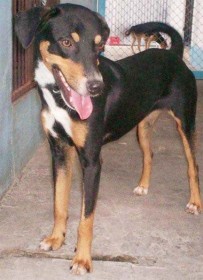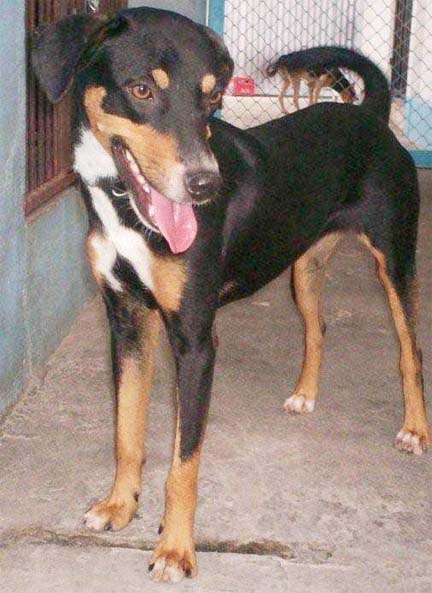I had mentioned in the Pet Corner of April 4, that an accumulation of hair in the stomach, over a period of time, could create a massive hair ball. This, in turn, could cause a digestive upset (even a gastritis condition). Similar-ly, ingested pieces of cloth or rubber or plastic can precipitate stomach problems and digestive disorders. We may need to induce the animal to vomit out the foreign body, but this is the vet’s decision.
You may use three per cent hydrogen peroxide, one to three teaspoonfuls every 10 minutes. If H2 O2 is not available, you may rely on common salt which is in every household. Just place a half to one teaspoon of salt at the back of the tongue. That should create an immediate reaction.
Let’s look at some other miscellaneous causes of stomach ailments. What follows was garnered from a pet owner’s handbook written by a doctor and a vet (Drs Griffin and Carlson).
Some dogs apparently are unable to tolerate certain foods, or certain brands of commercial dog food. As to which dog food is creating a problem, this can be determined simply by trial and error. Special diets can be prescribed by your veterinarian.
If your dog vomits about two hours or less after eating, the problem could be a food allergy. This is sometimes accompanied by a watery, or even bloody diarrhoea.
Achlorhydria is a condition existing in some breeds (eg the Bulldog). This is an ailment in which the stomach does not produce enough acid. It causes symptoms like those of chronic gastritis (see TPC, April 4). It can be treated by supplying the needed acid with meals. Your vet can advise you on the dosage rate.

Peptic ulcers are not common in the dog. When present, the symptoms are those of a chronic intestinal upset: vomiting, weight loss, anaemia, and the passage of blood. Diagnosis is made by upper gastrointestinal X-ray studies, using a contrast material (barium).
When I used to practise in Europe, bloat in dogs was a fairly common occurrence presented in the clinic. However, after decades of seeing patients in Guyana, I can only recall one case of canine bloat. Perhaps the genes that have to do with the anchoring of the stomach in place are not deficient among our Guyanese ‘pothounds.’
I remember adult Great Danes from the kennels of a particularly uncaring breeder, who had supplied dogs to Hitler, were frequent visitors to our clinic. In fact, the literature tells us that this bloat condition is mostly seen in large, deep-chested, older dogs (Great Danes, Dobermans, Setters, Saint Bernards, etc).
The scientists tend to agree that bloating is associated with an accumulation of gas and/or fluid in the stomach which may be the result of:
i) a cancerous growth at the exit area of the stomach or one compressing the exit area of the stomach from the outside;
ii) a stricture at or behind the stomach exit – the pyloric end;
iii) a foreign body;
iv) the ingestion of large quantities of food at extended intervals;
v) bacterial fermentation;
vi) chemical reactions within the stomach (eg if hydrochloric acid – already present in the stomach – reacts with a meal that has bicarbonate);
vii) the dog ingesting air (some dogs actually ‘bite’ in air as a habit).
The increase in fluid/gas causes an expansion of the stomach. This, in turn, facilitates the stomach turning on its own axis (vovulus). In fact, the condition we call ‘bloat’ is scientifically named ‘gastric dilation.’
What happens is that the stomach physically rotates 90-360° in a clockwise manner on its own axis (viewed from the front or the back). This means that the entrance to the stomach and the exit from the stomach are ‘tied off.’ Then the gas in the stomach builds up into a severe, life-threatening bloat.
Symptoms
* Restlessness
* Discomfort
* Pain elicited by touching the abdomen
* Non-stop vomiting – definitely after ingesting particles of food
* Excessive drooling
* Abdominal enlargement
We’ll continue to discuss this problem next week.
Please implement disease preventative measures (vaccinations, routine dewormings, monthly anti-heartworm medication, etc) and adopt-a-pet from the GSPCA’s Animal Clinic and Shelter at Robb Street and Orange Walk, if you have the wherewithal to care well for the animals. Do not stray your unwanted pets, take them to the GSPCA’s Clinic and Shelter instead. If you do not wish your pet to have puppies or kittens, you may exploit the GSPCA’s free spay and neutering programme. If you see anyone being cruel to an animal, or if you need any technical information, please get in touch with the Clinic and Shelter by calling 226-4237.


